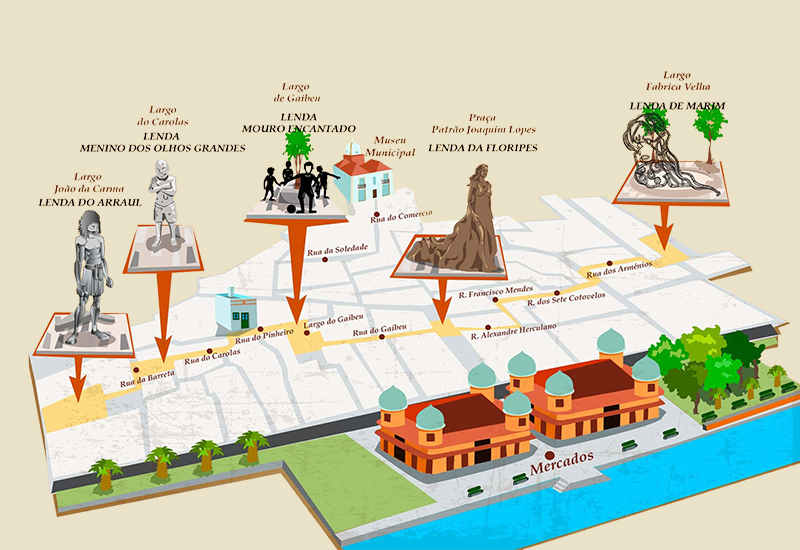Did you know that the Ria Formosa was created by the Gods of Atlantis as protection for the Algarve’s wonderful coastline? Vaughan Willmore finds out more.
The Gods of Atlantis were so enamoured with the eastern Algarve that they created a lagoon and sand barrier to protect it from foreign forces and the forces of nature. Okay, that’s probably not true, but it’s a lovely thought and it’s one of several stories, or to be more specific, legends, to be found in the bustling city of Olhão.
The Path of Legends (Caminho das Lendas) is a pedestrian walkway through the narrow streets of Olhão, connecting five neighbourhoods. In each of these five locations, there are eye-catching statues and other artistic creations, all of which are accompanied by signage telling captivating tales which reflect the history and the colourful nature of the region.
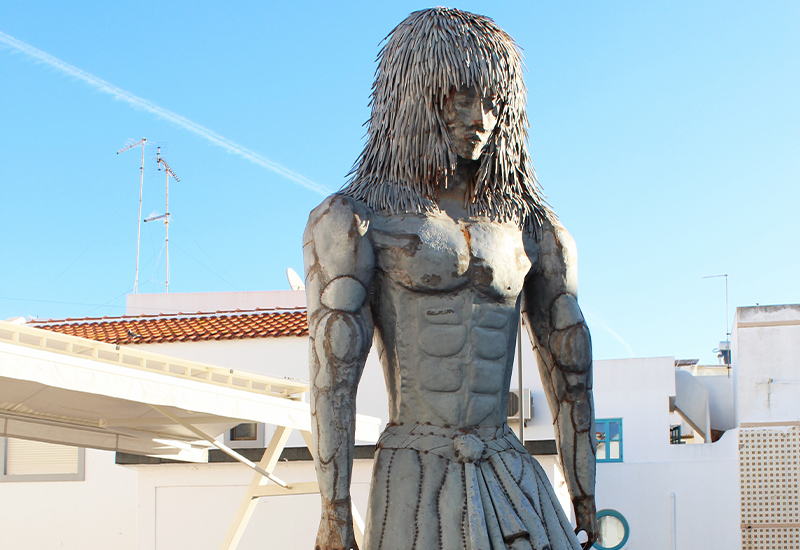
The Story of Arraul
The explanation for the Gods of Atlantis creating the Ria Formosa is told in the story of Arraul, who was the chief guard of the Pillars of Hercules and the son of Atlantis’ only survivor. When a terrible storm swept Arraul into the sea, he was swallowed by a gigantic whale.
Incredibly, he survived, and the whale brought him ashore at Prainhas, which is where Olhão stands today. Arraul loved the region so much that he wanted to protect it, and so he built the barrier islands which we know today as part of the Ria Formosa.
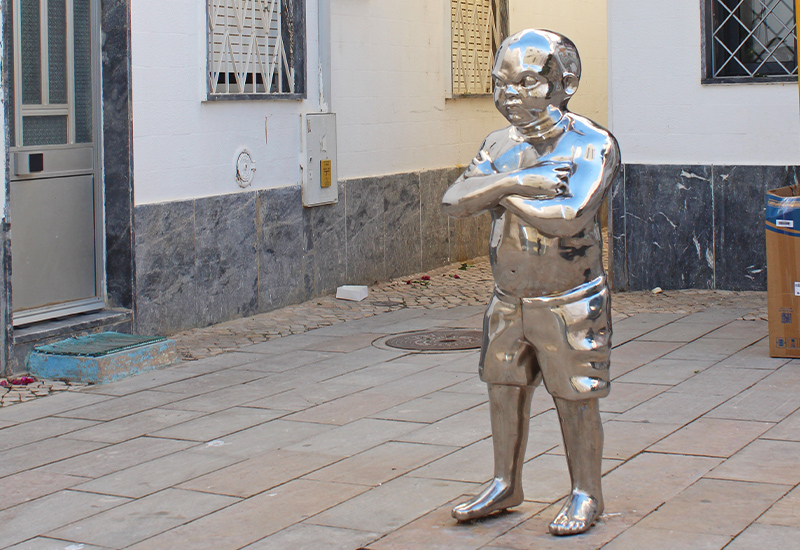
The Big-Eyed Boy
This legend was perhaps started by smugglers to scare the fishermen away from an area of the town known as Barreta. On dark winter nights, a crying boy with big black eyes would appear to the fishermen in this neighbourhood but say nothing. Taking pity on him, they carried him with them, but the further they walked, the heavier he became until, eventually, they could carry him no more. They left the boy on the ground, still crying. It is said that the boy no longer appears and that when Floripes (see the legend of Floripes) left for North Africa, she took the ‘big-eyed boy’ with her.
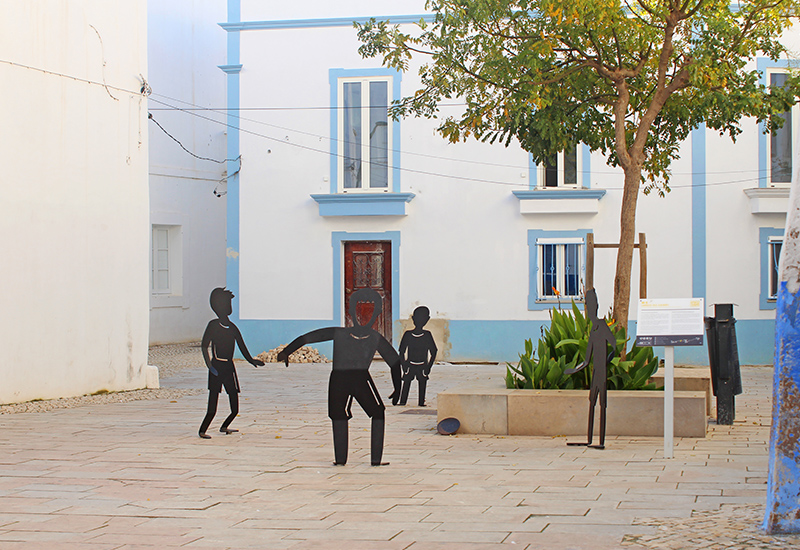
The Enchanted Moorish Boy
Manuel Caleca, a young fisherman, was playing in the streets with his friends when a young boy appeared and asked if he could join them. They agreed and began to play, but the young boy wasn’t very good at the game and Manuel told him so.
The young boy suggested that he and Manuel go and play elsewhere, eventually leading Manuel to a fantastic palace full of treasures. The sight of the treasures nearly drove Manuel insane. The young boy took Manuel back to his parents, vowing that only Manuel would ever be able to see him.
This proved true until Manuel’s mother took him to communion, after which the young boy disappeared, with Manuel never seeing his friend again.
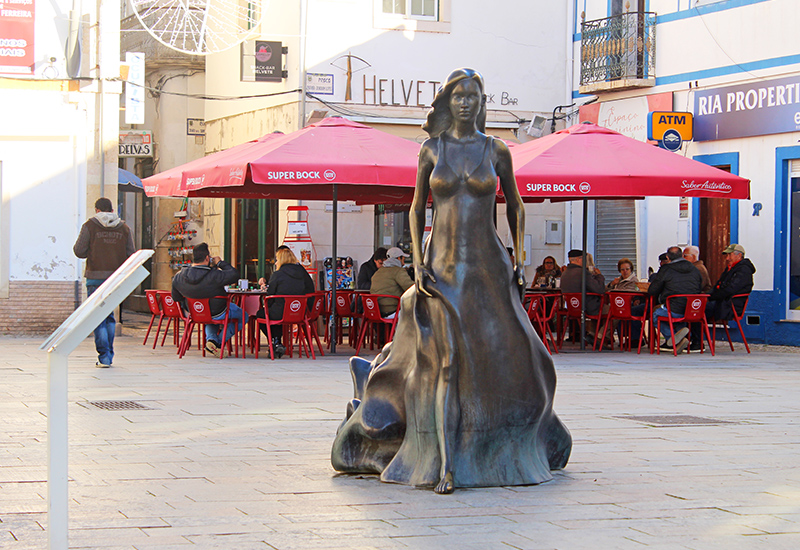
The Legend of Floripes
An old man called Zé told his friends tall tales of how, when he went to bed at night, he was visited by a beautiful young Moorish lady named Floripes, who provided him with pleasures only a woman can provide.
None of his friends believed him, so Zé wagered the youngest member of the group to check out his story. When Floripes appeared, it had consequences that no one could have foreseen, with Floripes declaring her love to old man Zé and both of them vanishing, reputedly to North Africa.
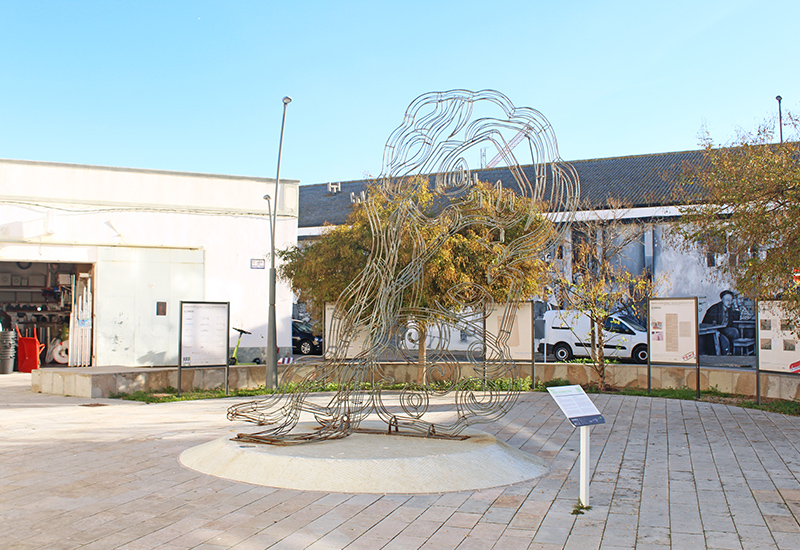
The Legend of Marim
In the Marim neighbourhood of Olhão, there was a beautiful palace where Princess Alina lived with her father. Every evening, a young man named Abdala serenaded Alina with songs of love. Alina’s father disapproved so, to deter the young man, he told him he could only have his daughter’s hand in marriage if he located the source of the nearby river and delivered it to the palace. The source of the river was 100 miles away, so Alina’s father thought it an impossible task.
The next evening, Abdala failed to appear. Alina was devastated. Then, as dawn broke, she heard a distant lute. It was Abdala! He’d found the source of the river and transported it to the palace. Alina’s father was enraged that Abdala had achieved such an impossible task and in a fit of rage, threw his daughter out of her bedroom window. Thankfully, Abdala caught her and the two of them sailed away down the river to live happily ever after.
The five legends tell tales of amazing deeds, lost love, friendship, ghostly tales, and the benevolence of the Gods of Atlantis.
What do each of these legends mean? Do they even have meanings? That’s part of the fun of visiting Olhão with family and friends to talk about the legends and see them in the context of the self-styled ‘capital of the Ria Formosa’ and the place the Gods of Atlantis were so keen to protect.
The map for exploring The Path of Legends is available at: museumunicipal.cm-olhao.pt/menu/1195/caminho-das-lendas
Did you know…
The Britannica Dictionary defines a legend as ‘a story from the past that is believed by many people, but cannot be proved to be true.’
It takes about 45 minutes to walk The Path of Legends or longer should you stop off at one of the many cafes, shops and restaurants along the way. It’s all on level terrain and is a great way to discover this thriving city, which prides itself on being the ‘Capital of the Ria Formosa’.
The Ria Formosa is a vast ecosystem stretching for 60 km along the coast of the eastern Algarve. Covering an area of approximately 18,000 hectares from the Ancão Peninsula in the municipality of Loulé to Manta Rota in Vila Real de Santo António, the wetland zone is of great ecological interest. It’s the home of a variety of habitats, including dunes, saltpans, marshes and off-shore barrier islands, along with a tremendous variety of fauna and flora. The Ria Formosa is known throughout the world for its amazing birdlife.
